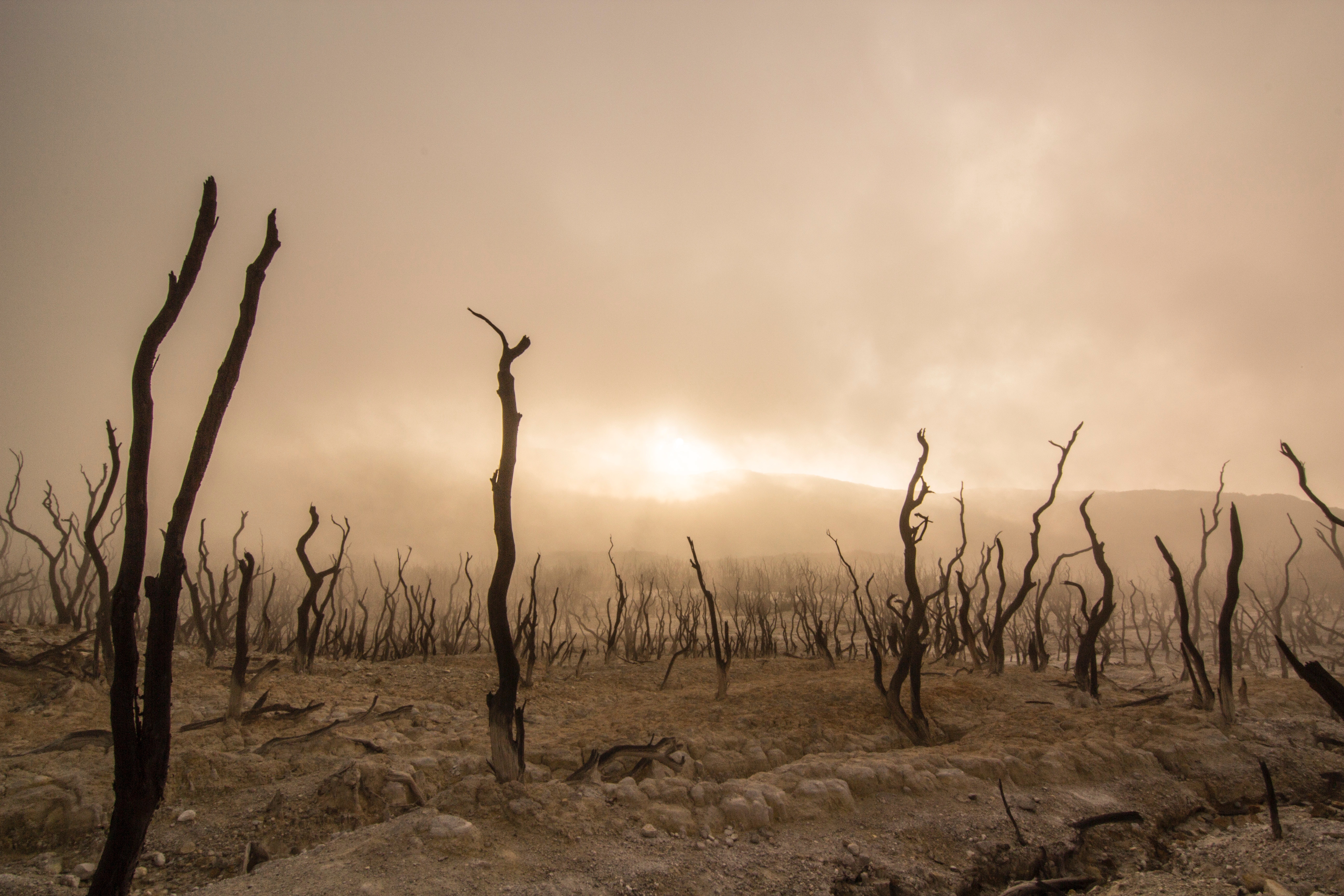TO BETTER UNDERSTAND AND QUANTIFY DUST EFFECTS UPON WEATHER, CLIMATE, ATMOSPHERIC CHEMISTRY AND OCEAN BIOGEOCHEMISTRY
Dust aerosols perturb the atmospheric radiative flux at both solar and thermal wavelengths and influence cloud formation, altering the energy and water cycles both at weather and climate time scales. During transport, dust alters the photolysis of ozone, influences chemical reactions of other trace gases, and becomes coated with sulfate, nitrate, chloride, and organics. Dust deposition affects biogeochemical cycling in ocean and terrestrial ecosystems by supplying limiting nutrients such as iron and phosphorus. One of the largest contributions to the uncertainty of dust radiative forcing and its biogeochemical effects originates with the uncertainties in the dust emission and distribution.
Another significant challenge is that all these processes depend fundamentally upon the physical and chemical properties of the dust particles. However, models have typically assumed that dust aerosols have globally uniform composition, despite known regional variations in the mineral composition of the parent soil.

Within this strategic goal, our research program will focus on three particular areas.
Constraining the size-resolved composition of dust aerosols is complicated. The composition of the emitted dust resembles some degree that of the parent soil. Substantial uncertainty remains in the soil databases due to the limited number of size-resolved measurements of mineral content that sparsely sample aerosols downwind of the major dust sources. Constraining the size-resolved mineral and chemical composition of dust by extending theoretical models and using up-to-date soil mineral databases will greatly reduce uncertainties in dust radiative forcing and soluble iron deposition while improving both dust and weather/climate forecasts and projections.
Sand and dust storms interrupt the daily cycle of solar heating by dimming the surface. Dust influence cloud formation (and consequently the associated radiative forcing) and it can also alter the precipitation patterns. By changing the precipitation, dust radiative forcing alters the regional distribution of vegetation, feeding back upon the mobilisation of dust. The inclusion of the effect of anthropogenic and natural dust upon climate and the associated feedbacks within models will improve short- and medium-range dust and weather forecasts.
Dust is estimated to contribute about 95% of the global atmospheric iron, while combustion sources (industry, biofuels and biomass burning) are responsible for the remaining 5%. Besides iron processing, the budget of atmospheric aerosols and gases and the associated effects upon radiation and clouds, are altered by the chemical reactions of dust with gases and other aerosol species. The design and implementation of iron processing mechanisms and dust heterogeneous reactions within models will allow reproducing observed aerosol concentrations and precursors gases which are modified by chemical reactions involving dust. This will help for constraining the deposition of soluble iron to the ocean the waters and its effect upon the carbon cycle in order to quantify the role of the natural versus anthropogenic sources of dust and iron (including combustion and cultivation)
